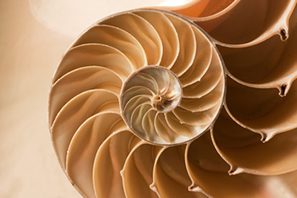What Are Prime Numbers
You may remember from Maths lessons that prime numbers are those that can be divided by themselves and one only. Example: 2, 3, 5, 7, 11, 13, 17, 19, 23, 29, 31.
Examples of significant prime numbers can be found in both nature man made electronics.
Why Do we attribute so much change to Prime Numbers?
Consider time in, say, years. Blocks of prime numbers are clearly attributable to periods of change in our life.
I believe we value prime numbers because they define these periods in our development.
There are no cycles within Prime numbers, as they can be divided only by themselves and 1. Therefore there is no repetition. For example, over a period of 7 years, a cycle can only appear yearly (7/7) or once (7/1).
Where the cycle appears yearly we can say this is the 7th cycle of 1, although 1 is a special case and not considered a prime number, that provides another story.
Where the cycle appears once the prime number is 7 and this signifies a development – as the cycle has not occurred before. The cycle may go on to repeat every 7 years, however it will then have become a recurrence and not a development.
It’s not hard to see how humans could be excited by new experiences that take place over prime numbers.
Prime Numbers in Encryption
Prime numbers are important in cryptography too. The objective behind encryption is to protect information and therefore the cypher has to be difficult to crack.
Multiplying two large prime numbers results in an extremely large non-prime number however it is very difficult to do this in reverse; that is to say take an extremely large number that has only two prime factors and find them.
Essentially you would need to try dividing by every number between 2 and the prime number.
This type of encryption is used every day on the internet to protect things like eCommerce sites and online banking, as it is used in the RSA Public Key Cryptosystem,
Prime Numbers in Nature
There are many examples of prime numbers in nature, but perhaps the most striking is the Cicada, an insect that spends most of it’s life underground, emerging only after a prime number of years (13 or 17) to mate. Different broods of these insects can be found across North America appearing in different years.
This prime number behaviour is thought to give the Cicada insect an advantage, by allowing it to have less contact with predators who also have behavioural cycles.
PRIME History and Future
It’s incredible to think that prime numbers were the interest of Euclid, a Greek geometer who was born in the mid-4th century BC.
Euclid proved that there are an infinite number of primes and today we are still looking for them – using computer power. A guardian article published in Feb 2013 is titled “The largest prime number yet discovered – all 17 million digits of it”
I wonder where it will lead us.
More:
The largest prime number yet discovered – all 17 million digits of it, The Guardian, Alex Bellos, Wednesday 6 February 2013 14.28 GMT. http://www.theguardian.com/science/alex … ion-digits
Euclid on Wikipedia, downloaded 15th January 2015. http://en.wikipedia.org/wiki/Euclid
RSA (cryptosystem) on Wikipedia, downloaded 15th january 2015. http://en.wikipedia.org/wiki/RSA_(cryptosystem).
Nature’s hidden prime number code, downloaded 8th February 2015. http://www.bbc.co.uk/news/magazine-14305667
entry150209-102527


